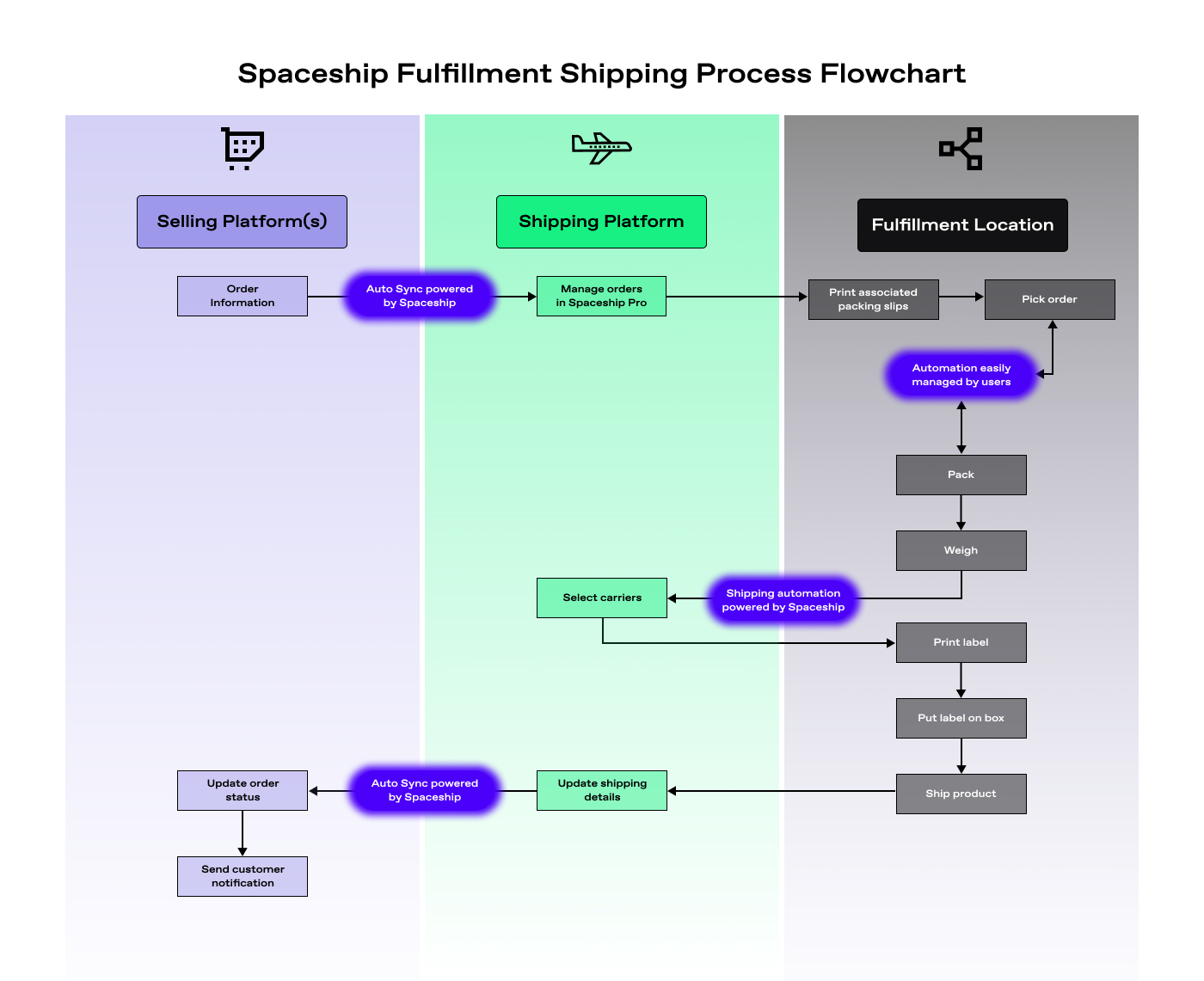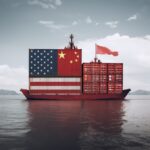
E-commerce fulfillment is a critical aspect of the order management process. It involves the steps required to get an order from a customer’s shopping cart to their doorstep. The three main e-commerce fulfillment options are in-house fulfillment, dropshipping, and third-party logistics (3PL). In this article, we’ll provide a comprehensive guide to help you choose the right e-commerce fulfillment strategy for your business.
Understanding E-commerce Order Fulfillment
E-commerce order fulfillment consists of 6 basic components: inventory management, warehousing and storage, receiving, pick & pack, shipping, and returns. Each of these components plays a crucial role in ensuring that customers receive their orders accurately, on time, and in good condition.
- Inventory management involves tracking the quantity and location of products in your inventory. This is essential for ensuring that you have the right products in stock and can fulfill customer orders promptly.
- Warehousing and storage involves storing your inventory in a physical location. This could be in-house or through a third-party logistics provider.
- Receiving involves accepting and processing incoming inventory shipments. This includes verifying the accuracy of the shipment and updating your inventory records accordingly.
- Pick & pack involves selecting the products from your inventory and packaging them for shipment. This includes labeling, packing materials, and any necessary documentation.
- Shipping involves getting the packaged order to the customer. This includes selecting the shipping carrier, creating a shipping label, and ensuring that the package is delivered on time.
- Returns involve accepting and processing returned products. This includes determining whether the product is eligible for return, processing the return, and updating your inventory records.
Choosing a Fulfillment Strategy
When choosing a fulfillment strategy, there are several factors to consider, including inventory volume, shipping location, and business strategy. Let’s take a closer look at the advantages and disadvantages of each e-commerce fulfillment option:
In-House Fulfillment: In-house fulfillment involves managing the entire fulfillment process in-house. This includes inventory management, warehousing and storage, receiving, pick & pack, shipping, and returns.
Advantages:
- Complete control over the fulfillment process
- Ability to customize packaging and branding
- Faster shipping times for local customers
Disadvantages:
- High initial investment costs
- Requires physical space for warehousing and storage
- Labor and management costs
- Limited scalability
In-house fulfillment is a good option for businesses that want complete control over the fulfillment process and have the resources to manage it in-house.
Dropshipping: Dropshipping involves partnering with a supplier who ships the products directly to the customer. This means that the business does not need to manage inventory or handle the fulfillment process.
Advantages:
- No need for inventory management or warehousing
- Low initial investment costs
- Easy to start and scale
- Offers geographic flexibility
Disadvantages:
- Limited control over the fulfillment process
- No control over inventory quality and availability
- Longer shipping times for customers
- Lower profit margins
Dropshipping is a good option for businesses that want to start selling products quickly with minimal upfront costs and are willing to sacrifice some control over the fulfillment process.
Third-Party Logistics (3PL): 3PL involves outsourcing the fulfillment process to a third-party logistics provider. This provider manages the entire fulfillment process on behalf of the business.
Advantages:
- Scalable and flexible
- No need for physical space for warehousing and storage
- Offers access to advanced fulfillment technology and expertise
- Ability to reach multiple geographic locations
Disadvantages:
- Less control over the fulfillment process
- Higher fulfillment costs compared to in-house fulfillment
- Limited ability to customize packaging and branding
3PL is a good option for businesses that want to outsource the fulfillment process and have access to advanced fulfillment technology and expertise.
Spaceship Fulfillment offers advanced techonology to let e-commerce owners control over the fulfillment process online. Just a few clicks needed to book the inventory and change the product packing rules instantly, plus comparing internal carriers online to find out the best-fitting shipping solutions.
Connect with Spaceship Fulfillment.
Get 30 days free storage when you book demo.
A summary to compare the advantages and disadvantages of in-house fulfillment, dropshipping and 3PL
|
Fulfillment Strategy |
Advantages |
Disadvantages |
|
In-House Fulfillment |
Complete control over the fulfillment process
Ability to customize packaging and branding Faster shipping times for local customers |
High initial investment costs Requires physical space for warehousing and storage Labor and management costs Limited scalability |
|
Dropshipping |
No need for inventory management or warehousing Low initial investment costs Easy to start and scale Offers geographic flexibility |
Limited control over the fulfillment process No control over inventory quality and availability Longer shipping times for customers Lower profit margins |
|
Third-Party Logistics (3PL) |
Scalable and flexible No need for physical space for warehousing and storage Offers access to advanced fulfillment technology and expertise Ability to reach multiple geographic locations |
Less control over the fulfillment process Higher fulfillment costs compared to in-house fulfillment Limited ability to customize packaging and branding |
Note that this table is not exhaustive and there may be additional advantages and disadvantages to consider for each fulfillment strategy. It’s important to carefully evaluate your business needs and goals before deciding on a fulfillment strategy.
How to Choose an E-commerce Fulfillment Provider
Choosing the right e-commerce fulfillment provider is a critical decision that can affect the success of your business. Here are some factors to consider when choosing an e-commerce fulfillment provider:
Reputation and Experience: Look for a provider with a solid reputation and experience in the industry. Check online reviews, case studies, and testimonials from other clients to assess their performance.
Fulfillment Capabilities and Technology: Make sure that the provider has the necessary fulfillment capabilities and technology to meet your needs. This includes inventory management software, order management systems, shipping software, and warehouse management systems. The provider should also have the ability to integrate with your e-commerce platform and other systems.
Customer Service and Support: A good e-commerce fulfillment provider should offer excellent customer service and support. Look for a provider that offers dedicated account management, 24/7 support, and a responsive customer service team.
Pricing and Fees: Understand the pricing structure and fees for the e-commerce fulfillment provider. Look for a provider that offers transparent pricing, with no hidden fees or charges.
Location and Reach: Consider the location of the fulfillment provider and their reach. Choose a provider that has a presence in the regions where your customers are located to ensure fast and cost-effective shipping.
Customization Options: Look for a provider that offers customization options for packaging, labeling, and branding. This will allow you to maintain your brand identity and provide a unique experience for your customers.
A summary of how to choose an E-commerce Fulfillment Provider
- Reputation and experience
- Fulfillment capabilities and technology
- Customer service and support
- Pricing and fees
- Location and reach
- Customization options
Benefits of Working with an E-commerce Fulfillment Provider
Working with an e-commerce fulfillment provider can offer several benefits to your business, including:
- Streamlined Operations: E-commerce fulfillment providers can help streamline your operations by handling the entire fulfillment process, from receiving orders to shipping products. This can free up your time and resources to focus on other aspects of your business.
- Improved Accuracy and Speed of Order Fulfillment: E-commerce fulfillment providers use advanced technology and automation to ensure accurate and fast order fulfillment. This can help improve customer satisfaction and reduce the likelihood of errors, delays, or lost shipments.
- Ability to Scale Operations as Your Business Grows: E-commerce fulfillment providers can help you scale your operations as your business grows, without the need for additional investment in warehousing, equipment, and staff. This can help you expand your business and reach new markets.
- Access to Advanced Fulfillment Technology and Expertise: E-commerce fulfillment providers have access to advanced fulfillment technology and expertise that may not be available in-house. This includes inventory management software, order management systems, shipping software, and warehouse management systems. This can help you stay competitive and provide a better customer experience.
Conclusion
Choosing the right e-commerce fulfillment strategy is crucial for the success of your business. It’s important to carefully evaluate your business needs and goals before deciding on a fulfillment strategy. Whether you choose in-house fulfillment, dropshipping, or third-party logistics, it’s essential to ensure that your customers receive their orders accurately, on time, and in good condition.
Learn more: Warehousing and Fulfillment Centers in Hong Kong: A Comprehensive Guide 2023
E-Commerce Fulfillment FAQ
What is E-Commerce fulfillment?
E-commerce Fulfillment is the process of 6 basic procedures to deliver a product to end customers. The process includes inventory management, warehousing and storage, receiving, pick & pack, shipping, and returns.
What is Dropshipping?
Dropshipping is an online retail model in that sellers are not holding any inventory during the business operation. The products can be sourced from any third-party platforms like CJ Dropshipping or Aliexpress , or other wholesalers and manufacturers. Once the dropshippers sold the products their partnered platforms will have them shipped directly to the customer.
What is Third-Party Logistics (3PL)?
Third-party logistics (3PL) refers to the outsourcing of e-commerce logistics to a logistics company that can provide expertise in e-commerce product delivery from inventory, warehousing, and pick-pack to shipping.
What is the difference between 3PL and 4PL?
The key difference between 3PL and 4PL is that 3PL focuses on supporting day-to-day logistics operations while 4PL helps E-commerce businesses to manage and optimise entire supply chains. 4PL also supports redesigning operation systems to improve cost and efficiency.









